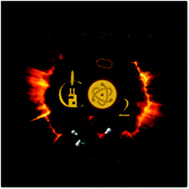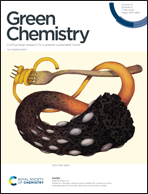Thermophilic bio-electro CO2 recycling into organic compounds†
Abstract
Many industrial combustion processes produce carbon dioxide (CO2) at high temperature, which may be electrically recycled into valuable chemicals using microorganisms as catalysts. However, little attention has been paid to handle the remaining heat of these processes as an alternative to increase CO2 fixation and production rates. Thus, this study was aimed at steering electro bio-CO2 recycling into organic compounds under thermophilic conditions. A mesophilic anaerobic sludge was adapted in lab-scale reactors at 50 °C, developing a resilient biocathode. High amounts of acetate (5250 mg L−1) were accumulated during a long-term operation period (150 days). The maximum production rate was 28 g acetate per m2 per d, with columbic efficiencies over 80%. In terms of carbon (C) conversion, 0.31 kg of C as acetate were obtained per 1 kg of C as CO2 inlet, with an energy demand of 24 kW h per 1 kg of acetate. Thermoanaerobacterales appeared to dominate the cathodic chambers, though they were compartmentalized by distinct bacterial communities in the electrode biofilm compared to the bulk liquid. This research delves into the sustained ability of a mixed microbial culture to electrochemically produce organic compounds at 50 °C and considers the possibility of using CO2-saturated effluents from industrial heated point sources to bring the technology closer to its scale-up.



 Please wait while we load your content...
Please wait while we load your content...